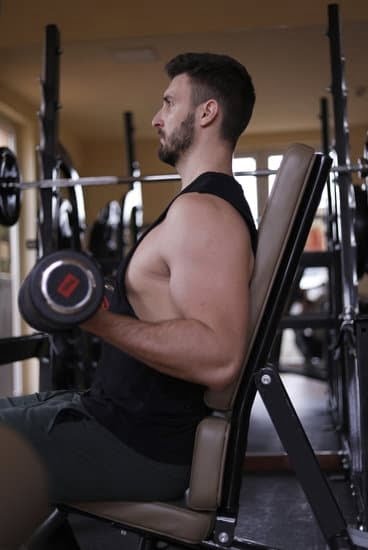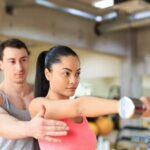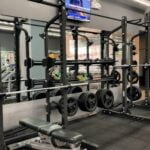Embarking on a fitness journey involves more than just sweating it out at the gym. Understanding the importance of exercise in achieving your fitness goals is crucial for creating an effective workout routine. By determining your exercise needs and objectives, you can tailor your fitness regimen to maximize results. From cardiovascular exercises to strength training and flexibility, each aspect plays a vital role in improving overall health and wellness.
To get fit, it’s essential to know what exercises to do that will benefit your body and help you reach your fitness goals. Incorporating different types of workouts into your routine can lead to a well-rounded approach towards achieving optimal health. This article will delve into the various facets of exercise, including cardiovascular exercises, strength training, flexibility, high-intensity interval training (HIIT), nutrition, overcoming plateaus, and incorporating variety into your workout routine.
By learning about the different aspects of exercise and how they contribute to overall fitness, you can make informed decisions about the type of workouts that will best suit your needs and preferences. Whether you’re aiming to improve heart health, build muscle, enhance flexibility, or break through fitness plateaus, understanding the fundamentals of exercise is key in reaching your desired level of physical fitness and well-being.
Setting Your Fitness Goals
When it comes to getting fit, one of the first steps is to set clear fitness goals. Without a specific target in mind, it can be challenging to stay motivated and track your progress. To determine your exercise needs and objectives, consider factors such as your current fitness level, any existing health conditions, and what you hope to achieve through your workouts.
To begin, start by evaluating your current fitness level. This can be done through simple assessments such as measuring your weight, calculating your body mass index (BMI), or timing how long it takes you to run a mile. Understanding where you currently stand will help you set realistic and attainable goals for improvement. Additionally, consider any health conditions or physical limitations that may impact the type of exercises you can safely perform.
Next, think about what you hope to achieve through your workouts. Are you looking to lose weight, build muscle, improve endurance, or simply maintain overall health? By identifying specific objectives, you can tailor your exercise routine to best meet those needs. For example, if weight loss is a primary goal, cardiovascular exercises such as running, swimming, or cycling may be more beneficial than strength training alone.
Lastly, take into account any personal preferences or interests when determining your exercise needs and objectives. Whether you enjoy team sports, outdoor activities, or solo workouts at the gym, choosing activities that align with your interests will make it easier to stick with a fitness routine over the long term.
- Assessing current fitness level
- Evaluating health conditions and physical limitations
- Identifying specific fitness objectives
- Tailoring exercise routine based on objectives
- Considering personal preferences and interests
Cardiovascular Exercises
When it comes to getting fit, cardiovascular exercises play a crucial role in improving heart health and increasing stamina. These types of exercises involve repetitive, rhythmic movements that elevate your heart rate and increase the efficiency of oxygen delivery throughout your body. Whether you’re a beginner looking to improve your overall fitness level or an athlete aiming to enhance your endurance, incorporating cardiovascular exercises into your workout routine is essential for achieving optimal results.
To get started on improving your cardiovascular fitness, consider adding the following exercises to your routine:
- Running or jogging: One of the most effective forms of cardiovascular exercise, running and jogging help strengthen the heart and lungs while also burning calories and improving overall endurance.
- Cycling: Whether it’s on a stationary bike or out in the great outdoors, cycling is a low-impact exercise that offers a great cardio workout while also helping to tone leg muscles.
- Swimming: Not only does swimming provide a full-body workout, but it’s also gentle on the joints, making it an ideal option for individuals with joint pain or injuries.
Incorporating these exercises into your fitness regimen will not only improve your cardiovascular health but also contribute to increased stamina and overall well-being. By dedicating time each week to engaging in cardiovascular activities, you’ll be well on your way to achieving your fitness goals while reaping the numerous benefits that come with improved heart health and endurance.
Strength Training
Strength training is an essential component of any workout routine, especially for individuals looking to build muscle and achieve a toned, leaner look. Whether you’re using free weights, resistance bands, or your own body weight, incorporating strength training exercises into your fitness regimen can yield impressive results.
When it comes to what exercises to do to get fit through strength training, there are numerous options to choose from. Compound exercises such as squats, deadlifts, and bench presses engage multiple muscle groups at once, making them efficient and effective for building overall strength and muscle mass. Additionally, isolation exercises like bicep curls and tricep extensions target specific muscle groups for more targeted toning and definition.
For those aiming for a lean physique, high-repetition, low-weight exercises can help increase muscular endurance without adding bulk. This approach is particularly beneficial for sculpting the body and achieving a more defined appearance. Incorporating a variety of exercises that target different muscle groups is also important in achieving balanced muscle development and an overall toned physique.
Flexibility and Balance
Benefits of Flexibility and Balance Exercises
Improving flexibility allows for a greater range of motion in the joints, which can enhance athletic performance and everyday movements. It also helps reduce muscle tightness and the risk of injury during physical activity. On the other hand, working on balance can not only improve stability but also aid in preventing falls, especially as we age.
Types of Exercises
Yoga, Pilates, Tai Chi, and stretching exercises are all great options for improving flexibility and balance. These exercises incorporate movements that target different muscle groups while also focusing on breathing techniques and mindfulness. Additionally, incorporating simple balance exercises such as standing on one leg or using a stability ball can help improve overall stability and coordination.
Integrating Flexibility and Balance Into Your Routine
It’s essential to dedicate specific time in your workout routine for flexibility and balance exercises. You can either allocate a separate day for these workouts or incorporate them into your warm-up or cool-down sessions. Remember that consistency is key when it comes to seeing improvements in flexibility and balance, so be sure to make these exercises a regular part of your fitness regimen.
By incorporating flexibility and balance exercises into your workout routine, you can enhance your overall physical capabilities while reducing the risk of injury. Whether it’s through dedicated yoga sessions or simply adding a few stretches at the end of your workouts, prioritizing these aspects of fitness will bring you closer to achieving your fitness goals.
High-Intensity Interval Training (HIIT)
High-Intensity Interval Training, or HIIT, has gained popularity in recent years as an effective way to maximize workout efficiency for faster results. This type of exercise involves alternating between short bursts of intense activity and periods of rest or low-intensity exercise. The goal of HIIT is to push your body to its limits during the high-intensity intervals, which can help improve cardiovascular endurance, boost metabolism, and burn more calories in a shorter amount of time.
Benefits of HIIT
One of the major benefits of HIIT is its ability to increase the body’s anaerobic and aerobic fitness levels. This means that not only does it improve cardiovascular health and endurance, but it also helps the body become more efficient at utilizing oxygen during intense workouts. Additionally, HIIT has been shown to promote fat loss while preserving muscle mass, making it a valuable tool for those looking to achieve a leaner physique.
Sample HIIT Workouts
For those wondering what exercises to do to get fit using HIIT, there are many options available. Some popular examples include sprinting intervals (alternating between sprints and walking or jogging), cycling intervals (alternating between high resistance sprints and lower intensity pedaling), and bodyweight exercises like burpees, jump squats, and mountain climbers performed at maximum effort for short bursts.
These types of workouts can be customized based on fitness level and can be incorporated into a regular exercise routine for added variety.
Important Considerations
It’s important to note that while HIIT can be highly effective, it should be approached with caution especially for beginners or individuals with certain health conditions. Proper warm-up and cool-down periods are essential when engaging in HIIT workouts to prevent injury.
It’s also important to listen to your body and give yourself adequate rest between high-intensity sessions to allow for recovery. Always consult with a fitness professional or healthcare provider before starting any new exercise program, especially if you have existing health concerns.
The Role of Nutrition
Nutrition plays a crucial role in fueling your body for optimal exercise performance. The food and drinks you consume provide the energy and nutrients needed to support your workouts, as well as aid in recovery and muscle repair. Proper nutrition can enhance exercise performance, improve endurance, and contribute to overall fitness and well-being.
When it comes to what exercises to do to get fit, it’s important to pay attention to your pre-workout and post-workout meals. Before a workout, opt for carbohydrates for quick energy, such as whole grains, fruits, or vegetables. Additionally, include a moderate amount of lean protein to help support muscle function during the workout. After exercising, focus on consuming a balance of protein and carbohydrates to aid in muscle recovery and replenish glycogen stores.
In addition to macronutrients like carbohydrates and protein, getting enough micronutrients from vitamins and minerals is also important for exercise performance. Nutrient-rich foods such as fruits, vegetables, nuts, seeds, and whole grains provide essential vitamins and minerals that support various bodily functions including muscle contraction, oxygen transport, and energy production. Staying properly hydrated is another key aspect of nutrition for exercise; be sure to drink an adequate amount of water before, during, and after your workout sessions.
| Nutrient | Food Sources |
|---|---|
| Carbohydrates | Whole grains (quinoa, oats), fruits (bananas, berries), vegetables (sweet potatoes) |
| Protein | Chicken breast, turkey, tofu, Greek yogurt |
| Vitamins & Minerals | Spinach (iron), oranges (vitamin C), almonds (magnesium) |
Overcoming Exercise Plateaus
Hitting a fitness plateau can be frustrating, but it’s a common occurrence for many individuals on their fitness journey. When you feel like you’re not making progress, it’s important to reevaluate your exercise routine and make necessary adjustments to continue moving forward towards your goals.
One effective strategy for overcoming an exercise plateau is to change up your workout routine. Your body can adapt to the same exercises over time, leading to diminished results. By incorporating new and different exercises into your regimen, you can challenge your muscles in new ways and reignite progress.
Another approach to break through a fitness plateau is to increase the intensity of your workouts. This could mean adding more weight during strength training, increasing the duration or intensity of cardiovascular exercises, or incorporating high-intensity interval training (HIIT) into your routine. By pushing yourself harder during workouts, you can stimulate further progress in strength, endurance, and overall fitness levels.
Additionally, it’s essential to focus on recovery and rest. Oftentimes, hitting a plateau is a sign that your body may need more time to recover from intense workouts. Make sure you are allowing adequate time for rest between workout sessions and consider integrating activities such as yoga or stretching to promote muscle recovery and reduce the risk of overtraining injuries.
Finally, reassessing your nutrition and hydration can also play a significant role in overcoming exercise plateaus. Ensure that you are fueling your body with the right balance of nutrients to support your workout efforts and staying properly hydrated throughout the day.
| Strategy | Description |
|---|---|
| Change up Workout Routine | Incorporate new exercises into regimen to challenge muscles in new ways |
| Increase Intensity | Add more weight, increase duration/intensity of exercises, or include HIIT workouts |
| Focus on Recovery | Allow adequate time for rest between workouts and incorporate activities for muscle recovery |
| Evaluate Nutrition & Hydration | Ensure proper balance of nutrients and stay hydrated to support workout efforts |
Incorporating Variety Into Your Workout Routine
In conclusion, understanding the importance of exercise is essential in achieving fitness goals. Whether it’s improving heart health and stamina through cardiovascular exercises, building muscle and toning the body with strength training, or enhancing flexibility and balance to prevent injuries, there are various types of exercises that can help individuals get fit. It is crucial to determine one’s exercise needs and objectives to create a workout routine that addresses specific fitness goals.
Nutrition also plays a vital role in fueling the body for optimal exercise performance. In addition to physical activity, incorporating a balanced diet can maximize workout efficiency and contribute to faster results. Furthermore, high-intensity interval training (HIIT) can be an effective way to challenge the body and break through fitness plateaus.
To maintain long-term success in fitness, it is important to incorporate variety into one’s workout routine. This not only keeps things interesting but also presents new challenges for the body, preventing monotony and providing motivation for continued progress. By embracing different types of exercises, individuals can ensure that they are continuously pushing their boundaries and working towards their fitness goals.
So, what exercises to do to get fit? The key is finding a combination of exercises that address various aspects of fitness while keeping the routine interesting and challenging.
Frequently Asked Questions
What Is the Best Exercise to Get Fit?
The best exercise to get fit varies from person to person, depending on their fitness goals and physical condition. However, a combination of cardiovascular exercises, strength training, and flexibility work is often recommended for overall fitness.
How Can I Train Myself to Get Fit?
Training yourself to get fit involves setting realistic goals, creating a workout plan, and sticking to it consistently. It’s also important to gradually increase the intensity of your workouts and listen to your body’s needs for rest and recovery.
How Do I Start Getting Fit?
To start getting fit, it’s essential to assess your current fitness level, set achievable goals, and create a workout routine that fits into your schedule. Incorporating a balanced diet and staying hydrated are equally important in the journey towards improving fitness.

Passionate about providing useful information to anyone with an interest in the field of Personal Training, I strive to pass on to our readers quality information and to answer any questions about Personal Trainers, the work they do and how to become one.





